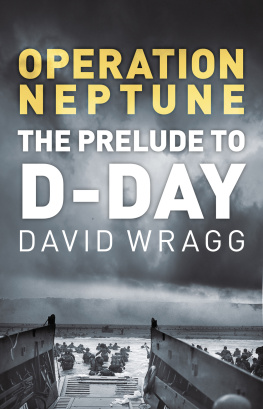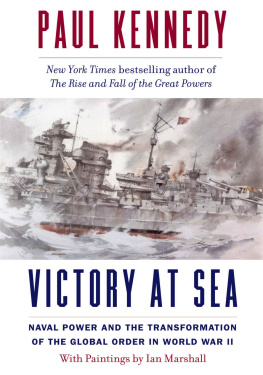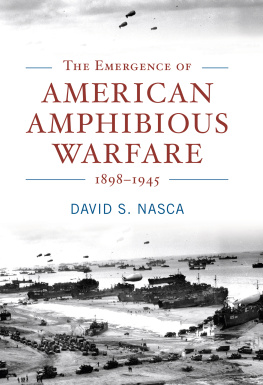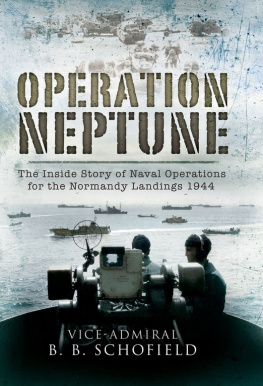

CHRISTOPHER D. YUNG
Naval Institute Press
Annapolis, Maryland
The latest edition of this work has been brought to publication with the generous assistance of The United States Naval Academy Class of 1945.
Naval Institute Press
291 Wood Road
Annapolis, MD 21402
2006 by Christopher D. Yung
All rights reserved. No part of this book may be reproduced or utilized in any form or by any means, electronic or mechanical, including photocopying and recording, or by any information storage and retrieval system, without permission in writing from the publisher.
ISBN: 978-1-61251-518-2 (eBook)
The Library of Congress has cataloged the hardcover edition as follows:
Yung, Christopher D.
Gators of Neptune : naval amphibious planning for the Normandy invasion / Christopher D. Yung.
p. cm.
Includes bibliographical references and index.
1. Operation Overlord. 2. Operation Neptune. 3. World War, 19391945Amphibious operations. I. Title.
D756.5.N6Y69 2006
940.5421421dc22
2005037955

 Print editions meet the requirements of ANSI/NISO z39.48-1992 (Permanence of Paper).
Print editions meet the requirements of ANSI/NISO z39.48-1992 (Permanence of Paper).
13 12 11 10 9 8 7 6 9 8 7 6 5 4 3 2 1
First printing
CONTENTS
I n 1999 the halls of the Carrier Group Four building in Norfolk, Virginia, were decorated with paintings of the U.S. Navy at Normandy. This caught my attention since I was at CARGRU Four representing the Commander, Amphibious Group Two, as his Center for Naval Analyses representative. Back in the late 1990s CARGRU 4 was one of a few commands responsible for the evaluation of the readiness of carrier battle group staffs. They were also at the center of an effort by the U.S. Navy to identify the tactical tasks that carrier groups and amphibious ready groups were responsible for. While waiting to support that effort I walked the halls of CARGRU 4 admiring the artwork, which depicted one of the largest amphibious assaults of the Second World War. In looking at these paintingslanding craft heading toward Omaha Beach, infantry climbing down nets off an attack transport, naval personnel watching the bombardment of the beaches of Franceit struck me that the amount of planning and thinking that went into that operation must have been enormous. My then-limited experience with the planning of amphibious operations informed me that planning for Marine Expeditionary Brigade and Marine Expeditionary Unit landings, the bread and butter of the modern-day U.S. Navys amphibious forces, took up a good deal of time and effort on the staffs part, and that was only for the landing of a reinforced regiment or a reinforced battalion. How much more time and effort would it have taken to plan and execute an amphibious landing involving multiple U.S. and British Army Corps?
I decided to look into what had been written on the subject of naval amphibious planning for the Normandy invasion. As it turned out, that wasnt much. A review of the books that have been written on the 1944 Normandy invasion showed me that the majority, rightfully, focus on the armies rushing ashore on the beaches of France. After all, these were the same troops who fought their way out of France and brought about the fall of Hitlers Third Reich. A significant number of other books on the Normandy invasion detail the activities of some of the major figures of that campaignmost notably Eisenhower, Montgomery, and Bradley, the decision makers whose vision eventually made the invasion of northern Europe a reality. A smaller number of accounts detail the activities of the other servicesthe Allied air forces and naviesin support of the Overlord operation. However, many of these accounts focus on D-day itself rather than the planning effort.
Of the books that do attempt to cover the planning of the Allied navies for Overlord, these usually focus on a specific aspect of the planning. Some cover the planning and execution of the movement of the artificial harbors to the coast of France. Some go into detail on the mine-sweeping operation that permitted the amphibious force to cross the Channel. Some focus on the contributions of a single individualin most instances the Allied naval commander, Admiral Sir Bertram Ramsay. In some instances, the depiction may cover a group of planners but focuses either on the British or the American side of the story and not on the interplay between the two. Consequently, the level of effort of the two navies doing the planning is insufficiently treated. Bernard Fergussons Watery Maze, for example, goes into great detail about the British effort to plan their amphibious assaults but only lightly covers the contributions the Americans made to the dialogue. Similarly, Samuel Eliot Morison spends almost all his time describing the American effort toward making Operation Neptune a reality and largely ignores the British efforts. In other instances, especially the early histories of Navy planning for Operation Neptune, the cooperation between the Royal Navy and the U.S. Navy is discussed, but those histories downplay the tensions that existed between the two sides, and the reader is given a watered-down version of what actually transpired.
Over time I came to the conclusion that a book on naval amphibious planning for Operation Neptune was worth the massive undertaking required to do it right. It would have to address the technical and doctrinal issues that shaped the planners understanding of what could and could not be done in an amphibious assault. It would have to delve into some of the early planning the British had undertaken in order to return to the Continent after their defeat in 1940. It would have to accurately portray the personalities involved, show the prejudices and leadership styles that these naval officers displayed, and demonstrate what conflicts and disagreements emerged among these individualsfor it was inevitable that in undertaking such an important task the participants would disagree or at least feel strongly about how to go about accomplishing their mission. The book would have to weave together the naval planning considerations with those considerations and concerns confronting the Army and air forces, and show how differences of opinion were eventually worked out. The book would have to be technically sound, addressing the issues that the Gators, or sailors of the amphibious navy, would be concerned with, while at the same time readable for everyone else.
A Comment on the Title of the Book
The term Gator is currently used to designate members of the U.S. Navy surface warfare community who have elected to specialize in amphibious operations. However, in the Second World War the officers and sailors who took part in amphibious operations received no such designation. They were all considered surface warfare officers or sailors who just happened to be involved in this new type of naval warfare. Still, I wanted the title of this book to capture the idea that these individuals in the Royal and United States navies had expertise in a form of naval warfare and a perspective on joint warfare that distinguished them from their brethren in the submarine forces, the cruiser-destroyer navy, or the then-emerging field of naval aviation. As anachronistic as it is for a book about the amphibious navy of the Second World War to use a term that was not invented until after that war, the term that best captures that spirit is the modern term for the amphibious warriorthe Gator. And so, after much discussion with the editors at the Naval Institute Press, I elected to go with the title
Next page












